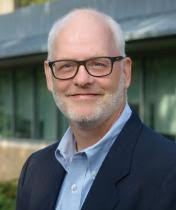We Can Change Our Culture of Gun Violence: Here’s How
Opinion Piece by YouthToday.org.
Gun violence occurs in the U.S. more often than in any other nation not at war. It is clear that this is a crisis we own. The propensity to shoot one another in our homes, schools, workplaces or on the streets is not part of our DNA and not biologically inevitable.
Shooting one another is a learned behavior. We learn to do so throughout our lives. We learn about firearms when facing pistols as threats in bullying incidents and witnessing gun violence up close and first-hand, as well as through more distant lenses via all types of media.
Through our social interactions with family members, friends, teachers, mentors, acquaintances, and strangers we have the opportunity to learn and develop skills in successfully navigating social relationships and non-violent conflict resolution. As we go about our days, we internalize these messages with an understanding of how our thoughts and emotions influence our behavior or we do not.
As participants in U.S. society, we are both intentionally and unintentionally complicit in reinforcing this culture of gun violence with others in our communities by the ways we speak and interact or the ways we remain silent and solitary.
We can change our culture of gun violence.
8 THINGS TO DO
The “Call to Action to Prevent Gun Violence in the United States of America” outlines eight action points developed by 19 prevention scholars. The plan’s recommendations are based on a public health model that is preventive in approach and community-wide in scope. Its activities can be undertaken while protecting all constitutional rights and outside partisan politics.
The “Call to Action,” summarized below, is divided among three levels of social engagement: universal (for everyone), targeted (for those at risk of engaging in violence) and indicated (for those engaging in violence).
Universal approaches promoting safety and well-being for everyone:
- A national mandate requiring physically and emotionally safe conditions and positive school environments to protect students and adults from bullying, discrimination, and assault.
- A national ban on assault-style weapons, high-capacity ammunition clips, and products enabling semi-automatic firearms to perform like automatic ones.
Practices for reducing risk and promoting protective factors for persons experiencing difficulties:
- Implement coordinated school and community-based mental health services for persons at risk for engaging in violence, recognizing that violence is not always a product of mental illness.
- Transform exclusionary school disciplinary factors to reduce the alienation of at-risk students and foster stronger connections between them and the school community.
- Employ universal background checks for firearm purchases to screen out violent offenders, persons previously hospitalized for violence and those on no-fly, terrorist watch lists.
Interventions for individuals where violence is present or appears imminent:
- Implement trained school and community-based threat assessment teams integrating mental health and law enforcement partners to advance open channels for the public to report potential threats, as well as interventions to resolve conflicts and engage with troubled individuals.
- Remove legal barriers to sharing safety-related information among educational, mental health and law enforcement agencies in cases where a person has threatened violence.
- Establish laws supporting gun violence protection orders allowing courts to order law enforcement to recover firearms from individuals planning violence against themselves or others.
CONNECTION TO SEL
Much scientific research supports this “Call to Action,” especially as it relates to school-based violence prevention efforts. For instance, the plan emphasizes improving children’s social competencies by exposing them early on to universal prevention efforts. The social and emotional learning (SEL) approach, for example, focuses on five areas of development: self-awareness, responsible decision-making, self-management, relationship skills, and social awareness. SEL programs in schools increase social and emotional competencies, promote mental health, support academic achievement — and prevent aggression.
In another example, research demonstrates that student connectedness to school promotes safe, effective learning environments. Extending coordination across not only school and home but to other community stakeholders as well has been widely shown to improve student outcomes and diminish violence.
Historical evidence illustrates the value of programs fostering students’ sense of community belonging. School shootings have been averted by engaged students. Perpetrators often discuss an impending attack with others. In cases where a shooting was averted, it was because concerned bystanders notified others of a threat.
Integrated mental health and law enforcement threat assessment teams also assist communities in avoiding threat-related errors, such as overreacting to misbehavior that does not pose a threat or underreacting to a serious threat. The Virginia Student Threat Assessment Guidelines model employs a problem-solving approach in recognition that violent behavior often stems from frustration with what may appear to be an unsolvable problem. Utilization of this model often results in a decreased use of school suspension and increased use of school counseling — and associated reports of safer, more supportive school climates by both students and teachers.
Eight points of a national action plan to prevent gun violence cannot by themselves bring about culture change. We all must intentionally work to advance positive change. The promise of change is evident in the growing number of endorsements by individuals, groups and professional organizations representing those who work in and with schools.
Yet there also must be buy-in from parents, youth, educators, school staff, mental health providers and law enforcement, as well as government officials. We must shift our focus on gun violence from incident reaction to dramatically enhanced community-wide prevention. The “Call to Action to Prevent Gun Violence in the United States of America” shows us how to start making our way.
READ THE ORIGINAL ARTICLE HERE:
https://youthtoday.org/2019/07/we-can-change-our-culture-of-gun-violence-heres-how/
Karen Coen Flynn, Ph.D., is a cultural anthropologist and senior research associate at the Begun Center for Violence Prevention Research and Education at the Jack, Joseph, and Morton Mandel School of Applied Social Sciences at Case Western Reserve University. Her primary research focus is vulnerable community members — such as those experiencing poverty, hunger, homelessness, violence, chronic illness (e.g., drug addiction, mental illness) and infectious disease — and their access to basic needs in the United States, Tanzania, and Indonesia.
Daniel J. Flannery, Ph.D., is the Dr. Semi J. and Ruth Begun professor and director of the Begun Center for Violence Prevention Research and Education at the Jack, Joseph, and Morton Mandel School of Applied Social Sciences at Case Western Reserve University. His primary areas of research are in youth violence prevention, the link between violence and mental health, and community-based program evaluation.


Karen Coen Flynn Daniel J. Flannery


Leave a comment